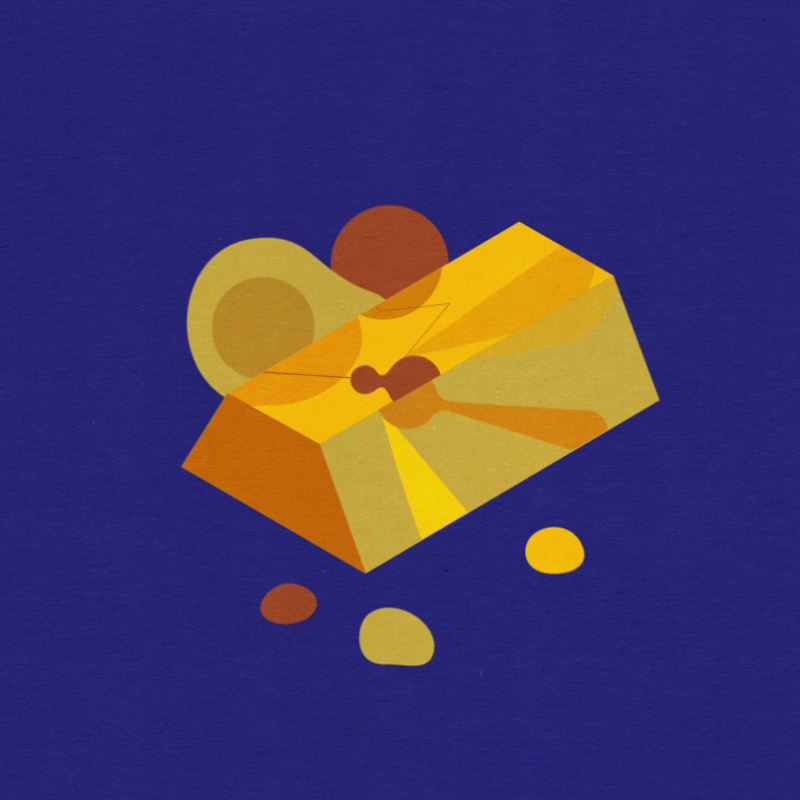Baltic Gold From Pine Resin
> BACK TO 100 STORIESListen to this text (Lithuanian):
After a stormy night, a strange sight can be seen on the shores of the Baltic Sea: holiday makers and locals picking over piles of dark seaweed. Some bring plastic beach buckets, shovels and rakes borrowed from their children for that purpose. What are they looking for? The answer is – Baltic gold.
Amber is called Baltic gold. It is not a metal, but a yellowish mineral formed from hardened coniferous resin. But if you think that you can scrape the pine resin from the trunk of a tree, wait a bit and it will turn it into amber, you will be disappointed - amber is formed over millennia. Scandinavia, on the other side of the Baltic Sea, was covered in coniferous forests 50–60 million years ago. As the climate began to warm, the pines that grew there released their resin, it was absorbed into the ground and hardened due to exposure to microorganisms in the soil. Thirty-three million years ago, rivers flowing from Scandinavia towards the east washed it out of the ground and carried it to the eastern coast of the Baltic Sea, especially to the Sambia Peninsula (now the Kaliningrad region), but also to Lithuania and other Baltic countries.
Although girls wearing amber are often mentioned in the Lithuanian folk songs, it is not known whether ancient Lithuanians really appreciated this gemstone that much. For example, the Roman historian Tacitus, writing in the first century, reported that our ancestors collected and sold amber to the Romans. The trade between the Baltic region and southern Europe took place on the so-called Amber Road, which ran along land routes and rivers through what is now Germany, Poland and Ukraine. In the Middle Ages, amber became so popular that it started being mined: at first by excavating pits, and later by digging deeper tunnels. Currently, the largest amber mine is in the Kaliningrad region, where it is mined with excavators and tractors. There were mines in the nineteenth century in Lithuania as well, but now production is limited to the collection of amber washed up along the shore – quite a lot of amber, about 600 kg per year, is found. Just as in ancient times, amber is used to make jewelry and decorate household items such as picture or mirror frames.
One as yet unresolved historical mystery is associated with amber mined off the coasts of Prussia and Lithuania. King Frederick II of Prussia gifted the Amber Room to the Russian Empress Catherine II in the eighteenth century. The best masters decorated one room of the empress’ palace with the yellow gemstone – it covered not only the walls, but also the furniture. During World War II, the German army invaded Russia, seized and transported the Amber Room to Königsberg, and they hid it so well during their retreat that no one has found it until this day. According to the surviving images, the Amber Room had been restored, but who knows in what depths of the earth or waters it is hidden. The legend of the Amber Palace at the bottom of the sea, where the sea goddess Jūratė lived, is better known in Lithuania. She fell in love with a regular human, fisherman Kastytis, and the god Perkūnas, enraged by such behaviour by the goddess, destroyed her palace. It is the remains of this palace that the sea now washes up on the shore after a stormy night.
Amber is special not only because of its yellowish luster, but also because its pieces sometimes contain preserved insects that lived thousands of years ago. This mineral can produce static electricity – the ancient Greeks even called it electron. You can experiment: rub a piece of amber onto your hair or sweater and add a piece of paper to it. The paper will stick to the amber – attracted by the electric charge generated.

